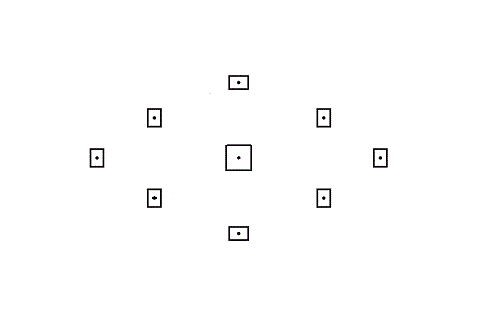We’re not sure anyone else in the photography industry refers to this subject as focal point metering but we do. Most photography books and experts simply call it ‘metering.’ We call it focal point metering because the meter tells the camera where to focus or what the focal point should be.
We hope by now you’ve read the owner’s manual that came with your camera. If not, did it out of the box and start learning all about your camera! Your manual should explain the camera’s metering system. The metering system tells your camera what to focus on. That’s why we call it focal point metering.
The focal point is simply what you’re focusing on. Sometimes you’re taking a picture of outdoor scenery and want everything to be in clear focus. Other times you might be photographing a deer standing in the middle of the field. If your focal point is the deer, do you really want that ugly tree in the background to be in focus?
Most digital cameras allow to you change the focal point metering. The three types of metering are matrix, center-weighted, and spot. By default, most cameras are set to matrix metering by the factory. As with all other settings, you should experiment with the metering to see which works best for you in different situations.
This lesson was rather difficult to prepare since there are so many different digital cameras on the market today. We can’t say for sure that all of this information pertains to your particular camera but we can say that the basic information is correct. The diagram below illustrates the meter of no-particular brand of camera. The square in the center represents the center of the viewfinder.
Most cameras allow you to turn on the ‘grid’ that shows the focal points used by the metering system. Many of today’s cameras have as many as 34 different focal points.
Matrix metering is the factory setting on most cameras. If you’ve never changed the metering, chances are your camera is set on matrix. In the diagram above, matrix metering uses all of the focal points to determine how to focus the camera. With matrix metering, the camera thinks you want everything in the picture to be in focus. This presents problems with high-contrast settings where the sun might be behind the subject or perhaps you have white snow next to a dark subject.
Center-weighted metering focuses on whatever is in the center of the viewfinder. Technically, the metering system takes the entire frame into consideration put places heavier weight on the center. In the diagram above, center-weighted metering would use the 7 focal points in the center. Until the matrix metering became more popular, cameras were set at center-weighted metering by default. In many situations, it does produce better pictures than matrix metering.
Spot metering is exactly that. The camera focuses on whatever happens to be in the exact spot indicated. In the diagram above, spot metering would use the center square as the focal point. Some cameras allow you to choose which spot should be the focal point. In the diagram above, if your camera allows, you could choose the spot in the right side as the focal point. Unlike matrix and center-weighted metering, spot metering doesn’t take the entire frame into consideration. It evaluates the exposure composition for only the area indicated by the spot.
The camera’s metering system takes into consideration factors such as the distance from the camera to the subject, light, color, composition of the scene, and focal point. Obviously, using matrix metering the camera has a lot more subject to take into consideration. If you have bright light on the left side of your scene and shadows on the right side, the metering system ‘attempts’ to equalize the exposure. If the overall scene is complex or cluttered, you might want to try spot metering.
Receive a free Certificate of Completion for this photography course. Pass a 40-question test on this course with a score of 70 or higher and receive a certificate of completion. Visit our Basics of Digital Photography Certificate of Completion page for more information.
